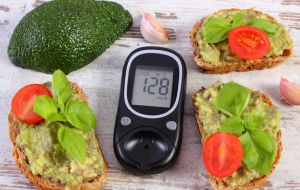Dysmenorrhea

About This Condition
Dysmenorrhea is painful menstruation. It is classified as either primary or secondary. Primary dysmenorrhea generally occurs within a couple of years of the first menstrual period. The pain tends to decrease with age and very often resolves after childbirth. Secondary dysmenorrhea is menstrual pain caused by another condition, commonly endometriosis. It starts later in life and tends to increase in intensity over time.
As many as half of menstruating women are affected by dysmenorrhea, and of these, about 10% have severe dysmenorrhea, which greatly limits activities for one to three days each month.1
Symptoms
Dysmenorrhea includes symptoms of abdominal bloating, frequent and intense cramps, pain below the waistline, or a dull ache that may radiate to the lower back or legs. There may also be symptoms of headache, nausea, diarrhea or constipation, frequent urination, and, occasionally, vomiting. The symptoms usually occur just before or during the menstrual period.
Healthy Lifestyle Tips
Many women feel the need to lie still while experiencing menstrual cramps, while others find that exercise helps relieve the pain of dysmenorrhea. This variation from woman to woman may explain why some researchers report that exercise makes symptoms worse,2 though most studies report that exercise appears helpful.3
Holistic Options
Relaxation techniques have been used with some success to alleviate dysmenorrhea in some young women. According to one preliminary study, the symptoms of menstrual cramps, nausea, irritability, and poor concentration greatly improved after 20-minute relaxation sessions twice per week.4
Acupuncture may be a useful therapy in the treatment of dysmenorrhea. A preliminary trial reported that 86% of women treated with acupuncture for dysmenorrhea had complete cessation of pain for three consecutive menstrual periods.5 Other preliminary trials have demonstrated similar results.6, 7, 8 A controlled clinical trial reported 91% efficacy with acupuncture compared to 36.4% efficacy with sham acupuncture (using fake acupuncture points) and 18% efficacy in an untreated control group.9 A small trial compared a 30-minute TENS (transcutaneous electrical nerve stimulation) treatment to stimulate acupuncture points with a placebo pill for dysmenorrhea. There was a large placebo effect in this study, and pain relief over the next several hours was not significantly better in the treatment group compared to placebo.10 More controlled trials are needed to determine whether acupuncture is a useful treatment for dysmenorrhea.
Spinal manipulation has been investigated as a treatment for dysmenorrhea. One small preliminary study reported improvement in symptoms measured by a questionnaire.11 A controlled clinical trial compared a single treatment of spinal manipulation to the low back and pelvis to a sham manipulation that was designed to be ineffective. Women receiving real manipulation reported twice as much relief as those receiving sham treatment.12 A recent, larger trial repeated the above study, testing a series of treatments over two months. Women reported less pain from both real and sham treatment, but there was no difference between the groups.13 Whether there is a real benefit from spinal manipulation for women with dysmenorrhea remains unclear at this time.
Copyright © 2024 TraceGains, Inc. All rights reserved.
Learn more about TraceGains, the company.
The information presented by TraceGains is for informational purposes only. It is based on scientific studies (human, animal, or in vitro), clinical experience, or traditional usage as cited in each article. The results reported may not necessarily occur in all individuals. Self-treatment is not recommended for life-threatening conditions that require medical treatment under a doctor's care. For many of the conditions discussed, treatment with prescription or over the counter medication is also available. Consult your doctor, practitioner, and/or pharmacist for any health problem and before using any supplements or before making any changes in prescribed medications. Information expires December 2024.















